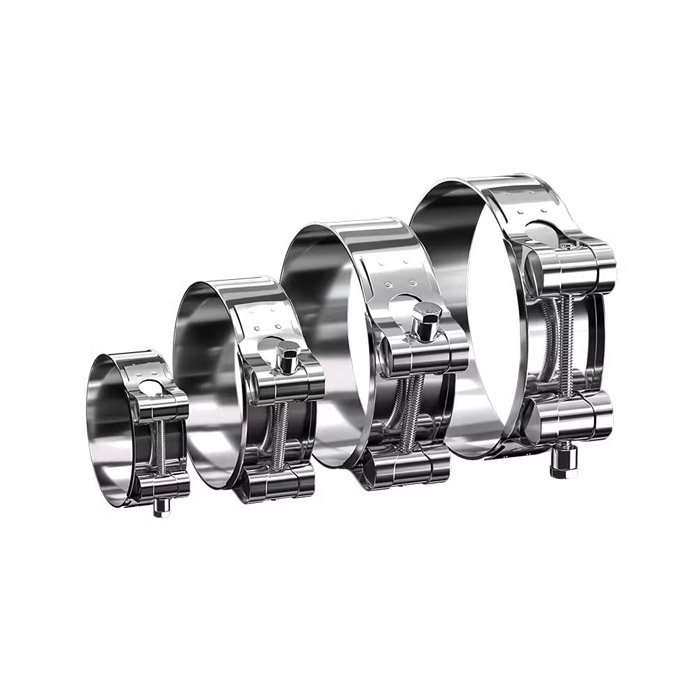- Phone:+86-17331948172 +86-0319-8862898
- E-mail: inquiry@puxingclamp.com
វិច្ឆិកា . 26, 2024 15:08 Back to list
Quality Hose Clamp with Nut Manufacturing for Reliable Performance and Durability
Understanding Hose Clamps with Nuts A Deep Dive into Their Manufacturing and Application
Hose clamps, often overlooked in the grand scheme of mechanical engineering, play a crucial role in ensuring the integrity and reliability of various systems. When paired with nuts, these clamps enhance the utility and versatility of applications ranging from automotive to plumbing, aeronautics, and more. This article explores the significance of hose clamps with nuts, delving into their manufacturing processes and varied applications.
What is a Hose Clamp?
A hose clamp is a device used to attach and seal a hose onto a fitting. It is typically a band made of metal or plastic that is clamped around a hose to prevent leaks and maintain pressure. The unique design allows for easy adjustment and a tight seal, making it indispensable in many environments. The inclusion of a nut allows for additional tightening and provides an extra layer of security, particularly in high-pressure situations.
Manufacturing Process of Hose Clamps with Nuts
The production of hose clamps involves several steps, utilizing advanced technology and skilled labor to ensure high quality and durability. Here’s a closer look at this process
1. Material Selection Manufacturers typically use materials such as stainless steel, zinc-plated steel, or plastic for hose clamps, depending on the application. Stainless steel is favored for its corrosion resistance and strength, making it ideal for automotive and marine applications.
2. Cutting and Shaping The chosen material is then cut into strips. These strips are shaped into a circular form that will encircle the hose fitting. Computer Numerical Control (CNC) machines often perform this task, allowing for precision and the ability to produce large quantities quickly.
3. Adding the Nut For hose clamps that incorporate nuts, a threaded section is formed where the nut will be fixed. This process may involve welding, crimping, or other techniques to secure the nut in place firmly. The design is critical, as it must withstand the torque applied during installation.
4. Finishing Touches The clamps are then treated to enhance durability. Processes such as galvanization, powder coating, or passivation may be applied to prevent rust and improve longevity. Quality control checks are performed at various stages of production to ensure that all specifications meet industry standards.
hose clamp with nut factory

5. Packaging and Distribution Once the quality checks are completed, the assembled hose clamps are packaged and prepared for distribution. Manufacturers focus on ensuring that the packaging protects the products during transportation while providing relevant information, such as size and material specifications.
Applications of Hose Clamps with Nuts
Hose clamps with nuts are employed across numerous industries due to their reliability and adaptability
. Here are some common applications1. Automotive Industry In cars and trucks, hose clamps secure coolant hoses, fuel lines, and air intake systems. The ability to withstand varying temperatures and pressures makes these clamps vital for engine performance.
2. Plumbing In residential and commercial plumbing systems, hose clamps help secure water hoses and pipes, preventing leaks and ensuring efficient water flow. The added nut feature is particularly beneficial in high-pressure systems.
3. HVAC Systems In heating, ventilation, and air conditioning systems, hose clamps are used to secure ductwork and refrigerant lines, helping maintain system integrity and efficiency.
4. Agriculture Farmers rely on hose clamps for irrigation systems and fuel lines for equipment. The durability and resistance to environmental factors make them ideal for outdoor applications.
5. Marine Applications Given their exposure to moisture and saline environments, marine-grade hose clamps are designed to resist corrosion. They are used in various marine systems, including fuel and water lines on boats.
Conclusion
The significance of hose clamps with nuts cannot be underestimated. They are essential components that ensure secure and leak-free connections in various applications. Through advanced manufacturing processes and stringent quality control, manufacturers are able to provide robust and reliable hose clamps that meet the diverse needs of industries around the globe. As technology advances and industries evolve, the importance of these seemingly simple tools will continue to grow, underpinning the efficiency and functionality of countless systems. Investing in high-quality hose clamps with nuts is crucial for anyone looking to ensure reliable performance in their respective fields.
-
Large Stainless Steel Adjustable American Type Hose Clamp - Hebei Pux Alloy Technology Co., Ltd
NewsAug.16,2025
-
Large Stainless Steel Adjustable American Type Hose Clamp - Hebei Pux Alloy Technology Co., Ltd|Corrosion Resistance&Adjustable Design
NewsAug.16,2025
-
Large Stainless Steel Adjustable American Type Hose Clamp - Hebei Pux Alloy Technology Co., Ltd
NewsAug.16,2025
-
Large Stainless Steel Adjustable American Type Hose Clamp-Hebei Pux Alloy Technology Co., Ltd|Corrosion-Resistant&Adjustable Design
NewsAug.16,2025
-
High Quality Stainless Steel Strip Roll | 301 & 316 Precision
NewsAug.16,2025
-
Large Stainless Steel Adjustable American Type Hose Clamp - Hebei Pux Alloy Technology Co., Ltd
NewsAug.15,2025




